-
 Bitcoin
Bitcoin $114800
-3.31% -
 Ethereum
Ethereum $3641
-5.84% -
 XRP
XRP $2.948
-6.36% -
 Tether USDt
Tether USDt $0.9998
-0.03% -
 BNB
BNB $772.4
-3.97% -
 Solana
Solana $169.1
-6.68% -
 USDC
USDC $0.9999
-0.01% -
 Dogecoin
Dogecoin $0.2056
-8.09% -
 TRON
TRON $0.3247
-0.18% -
 Cardano
Cardano $0.7239
-7.43% -
 Hyperliquid
Hyperliquid $39.71
-8.60% -
 Stellar
Stellar $0.3912
-7.84% -
 Sui
Sui $3.510
-10.17% -
 Chainlink
Chainlink $16.59
-8.03% -
 Bitcoin Cash
Bitcoin Cash $560.5
-3.65% -
 Hedera
Hedera $0.2464
-10.08% -
 Avalanche
Avalanche $22.03
-7.87% -
 Ethena USDe
Ethena USDe $1.001
-0.02% -
 UNUS SED LEO
UNUS SED LEO $8.947
0.21% -
 Toncoin
Toncoin $3.389
-2.58% -
 Litecoin
Litecoin $104.9
-5.23% -
 Shiba Inu
Shiba Inu $0.00001220
-6.67% -
 Polkadot
Polkadot $3.652
-6.10% -
 Uniswap
Uniswap $9.213
-9.05% -
 Monero
Monero $307.2
-2.93% -
 Dai
Dai $0.9998
-0.02% -
 Bitget Token
Bitget Token $4.367
-2.89% -
 Cronos
Cronos $0.1374
-6.80% -
 Pepe
Pepe $0.00001056
-8.65% -
 Aave
Aave $257.3
-7.31%
Is Parabolic SAR good for day trading crypto?
Parabolic SAR helps crypto day traders spot trend reversals, but works best when combined with EMA, RSI, and volume to filter false signals in volatile markets.
Jul 31, 2025 at 08:01 pm
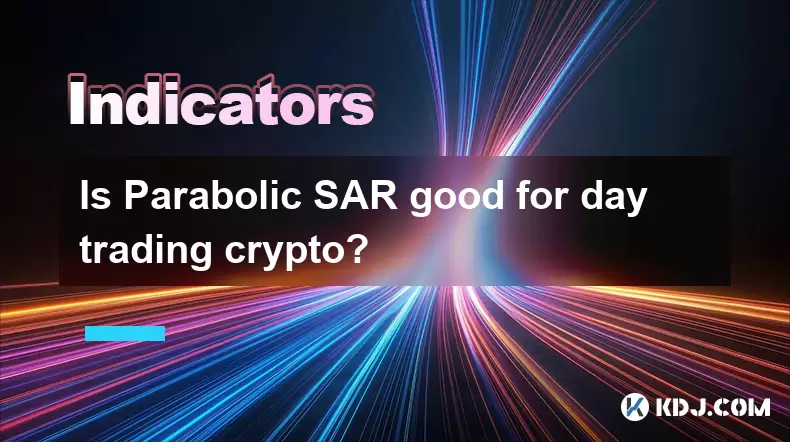
Understanding Parabolic SAR in Crypto Markets
The Parabolic SAR (Stop and Reverse) is a technical indicator developed by J. Welles Wilder to identify potential price reversals in trending markets. It appears as a series of dots placed either above or below the price chart. When the dots are below the price, it signals an uptrend; when above, a downtrend. This visual layout makes it particularly appealing for day traders in the cryptocurrency market, where rapid price swings are common. Cryptocurrencies like Bitcoin and Ethereum often exhibit strong trends, which is where Parabolic SAR performs best. However, its effectiveness depends heavily on market conditions. In highly volatile or sideways markets, the indicator may produce false signals, leading to premature entries or exits.
How Parabolic SAR Works in Day Trading
The formula behind Parabolic SAR involves an acceleration factor and an extreme point, which adjusts as the trend progresses. The calculation begins with an initial SAR value and updates with each new candlestick. The key parameters traders can adjust are:
- Acceleration Factor (AF): Typically starts at 0.02 and increases by 0.02 each time a new extreme point is reached, up to a maximum of 0.2.
- Maximum Acceleration: Limits how fast the SAR can catch up to the price.
For day trading crypto, traders often use 1-minute, 5-minute, or 15-minute charts. On these timeframes, the Parabolic SAR reacts quickly to price changes. A dot flipping below the price candle suggests a potential long entry, while a flip above indicates a possible short opportunity. However, due to the high volatility of crypto assets, the default settings may generate excessive noise. Many traders modify the acceleration factor to reduce sensitivity, such as setting the max AF to 0.1 instead of 0.2, to avoid whipsaws during consolidation phases.
Combining Parabolic SAR with Other Indicators
Using Parabolic SAR in isolation can lead to misleading signals, especially in choppy crypto markets. To enhance reliability, traders combine it with complementary tools: - Moving Averages (MA): A 9-period or 20-period EMA can confirm the overall trend direction. Only take SAR signals that align with the moving average slope.
- Relative Strength Index (RSI): Helps determine overbought or oversold conditions. For instance, a SAR reversal signal during an overbought RSI (above 70) carries more weight for a short entry.
- Volume Indicators: Increasing volume on a SAR reversal increases the likelihood of a sustained move.
For example, if the Parabolic SAR dot flips below the price on a 5-minute BTC/USDT chart, and the 9 EMA is sloping upward while RSI is rising from 50, this confluence strengthens the long trade signal. Conversely, if the SAR flips above price but volume is low and RSI shows no bearish divergence, the signal may be ignored.
Step-by-Step Setup for Parabolic SAR in Crypto Day Trading
To implement Parabolic SAR effectively on a crypto trading platform like Binance or TradingView, follow these steps: - Open your preferred charting platform and load a cryptocurrency pair such as ETH/USDT.
- Navigate to the indicators section and search for “Parabolic SAR.”
- Apply the indicator to the chart and adjust the settings: set initial AF to 0.02, increment to 0.02, and maximum to 0.1 for reduced noise.
- Overlay a 9-period Exponential Moving Average to confirm trend bias.
- Add RSI (14-period) to assess momentum.
- Wait for the SAR dot to flip position—below price for long, above for short.
- Confirm alignment with the EMA direction and RSI reading before entering.
- Set a stop-loss just beyond the most recent SAR dot to manage risk.
- Use trailing stops based on SAR movement to lock in profits during strong trends.
This method ensures trades are not based solely on SAR but supported by multiple layers of confirmation, increasing the probability of success.
Common Pitfalls and How to Avoid Them
One major issue with Parabolic SAR in crypto day trading is whipsawing during range-bound markets. When prices move sideways, the SAR dots flip frequently, generating false reversal signals. To avoid this: - Use ADX (Average Directional Index) to confirm trend strength. Only trade SAR signals when ADX is above 25, indicating a strong trend.
- Avoid trading during low-volume periods such as weekends or holidays when crypto markets tend to consolidate.
- Combine SAR with support and resistance levels. A SAR reversal near a known resistance zone is more credible than one in open space.
Another mistake is using default settings without optimization. Crypto assets vary in volatility—Bitcoin tends to trend more smoothly than altcoins like Shiba Inu, which can spike and crash rapidly. Adjusting the SAR’s acceleration factor based on the asset’s behavior improves accuracy. For highly volatile altcoins, a lower max AF (e.g., 0.08) prevents premature reversals.
Real-Time Example: Using Parabolic SAR on Solana
Imagine trading SOL/USDT on a 5-minute chart during a strong upward move. The Parabolic SAR dots are consistently below the candles, confirming the uptrend. Suddenly, the price pulls back, and the SAR dot appears above the candle. This could signal a reversal. However, before acting: - Check the 9 EMA: Is it still sloping upward? If yes, the trend may not be broken.
- Look at RSI: Did it drop below 30 and bounce? A bullish RSI divergence suggests buying pressure returning.
- Observe volume: Was the pullback on low volume? This weakens the bearish signal.
In this case, if the EMA remains upward, RSI shows bullish divergence, and volume is low on the down move, the SAR flip may be a temporary pullback. Instead of shorting, a trader might wait for the SAR to flip back below price with increasing volume, then enter long with a stop-loss above the recent high.
Frequently Asked Questions
Can Parabolic SAR be used on all cryptocurrencies?
Yes, it can be applied to any crypto asset, but effectiveness varies. Major coins like Bitcoin and Ethereum with clearer trends respond better than low-cap altcoins prone to erratic price action.What timeframes work best with Parabolic SAR for day trading?
The 5-minute and 15-minute charts are most effective. Shorter timeframes like 1-minute increase noise, while longer ones like 1-hour reduce the number of day trading opportunities.Should I always follow every SAR signal?
No. Only act on signals confirmed by other indicators like moving averages, volume, or RSI. Blindly following SAR leads to losses during sideways markets.How do I adjust SAR settings for different market conditions?
In strong trends, keep the default or slightly increase the acceleration factor. In choppy markets, reduce the maximum AF to 0.1 or use a higher timeframe SAR to filter signals.
Disclaimer:info@kdj.com
The information provided is not trading advice. kdj.com does not assume any responsibility for any investments made based on the information provided in this article. Cryptocurrencies are highly volatile and it is highly recommended that you invest with caution after thorough research!
If you believe that the content used on this website infringes your copyright, please contact us immediately (info@kdj.com) and we will delete it promptly.
- Bitcoin, Ethereum, and Investor Behavior: A New York Minute on Crypto Trends
- 2025-08-01 15:10:12
- Tether's Q2 Triumph: USDT Supply Soars Amidst Profit Surge!
- 2025-08-01 15:10:12
- Ethereum ETF Holdings: A Corporate Treasury Revolution?
- 2025-08-01 15:30:12
- Ethereum's Wild Ride: Funding Rates, Price Drops, and Retail to the Rescue!
- 2025-08-01 15:30:12
- Ethereum Under Pressure: Crypto Market Drop Explained
- 2025-08-01 15:35:11
- Ethereum ETF Mania: Inflows Surge, Market Rises, What's Next?
- 2025-08-01 15:35:11
Related knowledge

What is the difference in KDJ signal interpretation between a trending and a ranging market?
Aug 01,2025 at 03:56pm
Understanding the KDJ Indicator in Cryptocurrency TradingThe KDJ indicator is a momentum oscillator widely used in cryptocurrency trading to identify ...

Does the KDJ indicator work well for low-liquidity crypto assets?
Aug 01,2025 at 02:01pm
Understanding the KDJ Indicator in Cryptocurrency TradingThe KDJ indicator is a momentum oscillator derived from the Stochastic Oscillator, widely use...
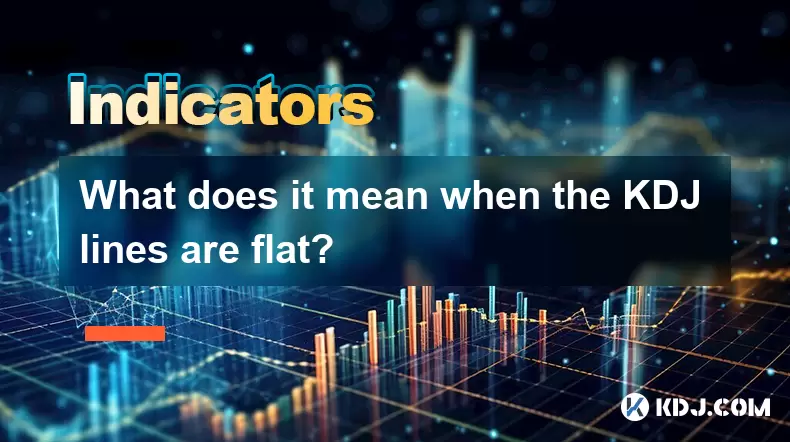
What does it mean when the KDJ lines are flat?
Aug 01,2025 at 03:22pm
Understanding the KDJ Indicator in Cryptocurrency TradingThe KDJ indicator is a momentum oscillator widely used in cryptocurrency technical analysis t...
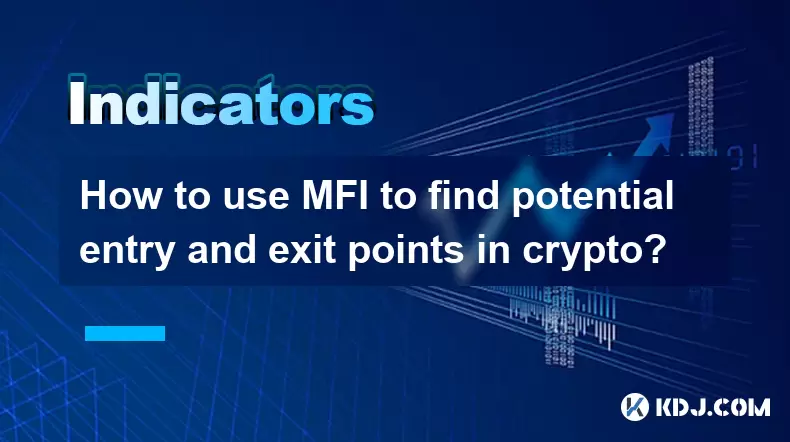
How to use MFI to find potential entry and exit points in crypto?
Aug 01,2025 at 02:35pm
Understanding the MFI Indicator in Cryptocurrency TradingThe Money Flow Index (MFI) is a momentum oscillator used to measure the strength and directio...
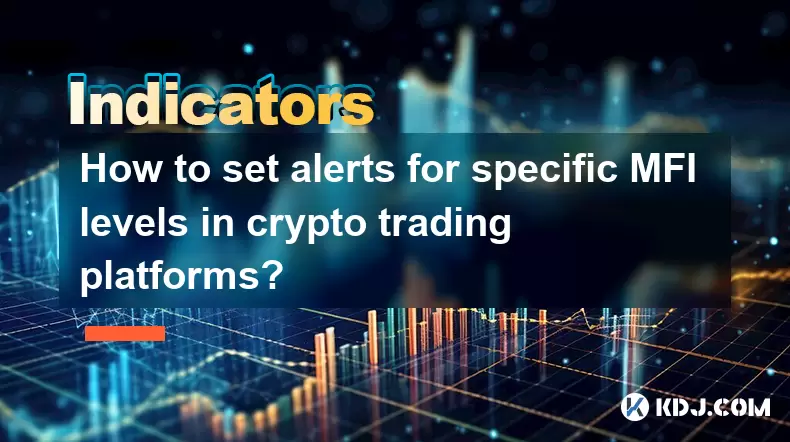
How to set alerts for specific MFI levels in crypto trading platforms?
Aug 01,2025 at 12:42pm
Understanding the Money Flow Index (MFI) in Crypto TradingThe Money Flow Index (MFI) is a momentum oscillator that measures the flow of money into and...
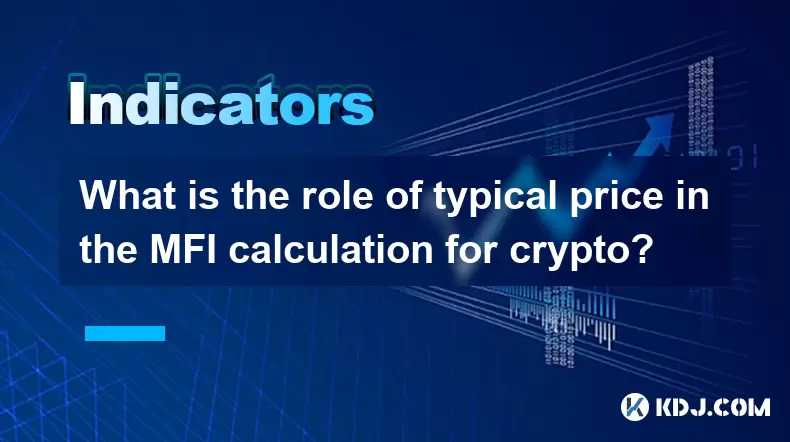
What is the role of typical price in the MFI calculation for crypto?
Aug 01,2025 at 12:21pm
Understanding the Typical Price in MFI for Cryptocurrency AnalysisThe Typical Price plays a crucial role in the calculation of the Money Flow Index (M...

What is the difference in KDJ signal interpretation between a trending and a ranging market?
Aug 01,2025 at 03:56pm
Understanding the KDJ Indicator in Cryptocurrency TradingThe KDJ indicator is a momentum oscillator widely used in cryptocurrency trading to identify ...

Does the KDJ indicator work well for low-liquidity crypto assets?
Aug 01,2025 at 02:01pm
Understanding the KDJ Indicator in Cryptocurrency TradingThe KDJ indicator is a momentum oscillator derived from the Stochastic Oscillator, widely use...

What does it mean when the KDJ lines are flat?
Aug 01,2025 at 03:22pm
Understanding the KDJ Indicator in Cryptocurrency TradingThe KDJ indicator is a momentum oscillator widely used in cryptocurrency technical analysis t...

How to use MFI to find potential entry and exit points in crypto?
Aug 01,2025 at 02:35pm
Understanding the MFI Indicator in Cryptocurrency TradingThe Money Flow Index (MFI) is a momentum oscillator used to measure the strength and directio...

How to set alerts for specific MFI levels in crypto trading platforms?
Aug 01,2025 at 12:42pm
Understanding the Money Flow Index (MFI) in Crypto TradingThe Money Flow Index (MFI) is a momentum oscillator that measures the flow of money into and...

What is the role of typical price in the MFI calculation for crypto?
Aug 01,2025 at 12:21pm
Understanding the Typical Price in MFI for Cryptocurrency AnalysisThe Typical Price plays a crucial role in the calculation of the Money Flow Index (M...
See all articles

























































































